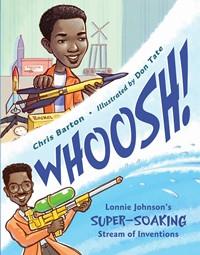Melissa-Sue John, Ph.D.— wife, mother, psychologist, STEM education researcher, blogger, and author of children’s books — currently lectures at Quinnipiac University, works as a Research Associate at Worcester Polytechnic Institute, and is the founder of Lauren Simone Publishing House, which publishes the work of youth authors and illustrators. To learn more, visit www.seedstostem.org, or Instagram: @laurensimonepubs @wpiseedsofstem
———
So you are an educator and you want to introduce more STEM activities to your students? Picture books provide perfect opportunities for teaching the problem-solving skills that are the basis of engineering.
I recently attended a workshop entitled “Engineering a Story” at the STEM Education Center at Worcester Polytechnic Institute (WPI). The workshop focused Engineering Design Process (EDP) — or problem solving — applied to any fiction or nonfiction text.”
We learned strategies to guide students in
When generating a list of picture books to examine problem solving, of course you want that list to feature diverse main characters. You can find these books through the Diverse BookFinder. Click on Search and type in “problem solving.” (You could do a similar search on another STEM topics, such as “plants.”) Fifteen books pop up, so you are in luck.
Let’s choose five to start with:
(Chinese boy)

Cao Chong weighs an elephant
2,000 years ago in China, a curious boy named Cao Chong solves the problem of how to weigh an elephant when the prime minister's most trusted and knowledgeable advisors are stumped. Includes activities.
(White girl, teacher's race unclear)

Wilma Jean the worry machine
Wilma Jean worries about everything. She worries about missing the bus, doing a math problem wrong, having friends to play with, and getting carrots in her school lunch. Wilma Jean's teacher helps her figure out what worries she can control and those that she can't and what to do about both types of worries.
(Black girl)

Off to market
Hop on board the market bus! Everyone wants a ride and soon it's full to the top. But when the bus reaches a steep hill it just can't go any further. How will they lighten the load? Little Keb has the answer, proving that even the smallest person can make a big difference.
(Latino boy)

Looking for Bongo
A boy's beloved stuffed toy, Bongo, is missing. No one can help him. When he asks his abuela where Bongo is, she answers, "Yo no sé. I don't know." Mom and Dad haven't seen Bongo either. Gato just says "Meow" and runs away. When Bongo finally turns up behind Dad's drum, the problem of Bongo's whereabouts is resolved, but it doesn't answer how Bongo got there! The boy decides to set a trap to catch the Bongo thief. -- Provided by Amazon
(Black boy)

Whoosh!
You know the Super Soaker. It's one of top twenty toys of all time. And it was invented entirely by accident. Trying to create a new cooling system for refrigerators and air conditioners, inventor Lonnie Johnson instead created the mechanics for the iconic toy. A love for rockets, robots, inventions, and a mind for creativity began early in Lonnie Johnson's life. Growing up in a house full of brothers and sisters, persistence and a passion for problem solving became the cornerstone for a career as an engineer and his work with NASA. But it is his invention of the Super Soaker water gun that has made his most memorable splash with kids and adults.
Once you’ve chosen your book, it’s time to design a lesson plan around problem solving using Engineering Design Process (EDP):
As your students work through the EDP using books with racially- and culturally-diverse characters, they can absorb important concepts not just about how engineering works, but also about who can be an engineer.

